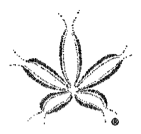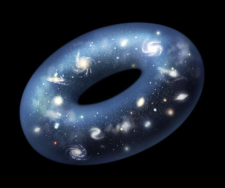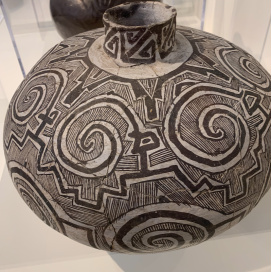Apart from the pulling and the hauling stands what I am.
Stands amused, complacent, compassionating, idle, unitary,
Looks down, is erect, or bends an arm on an impalpable certain rest,
Looking with side-curved head curious what will come next.
Both in and out of the game and watching and wondering at it.
Ortho-Bionomy Ortho-Bionomy® orthobionomy
- Ortho-Bionomy is the name coined by British trained Canadian osteopath, Dr. Arthur Lincoln Pauls to point to a particular style of bodywork he developed. He meant the name to translate as "The correct application of the laws of life". He wrote a book about it, published posthumously: The Philosphy and History of Ortho-Bionomy.
Ortho-Bionomy® is a trademark name, owned in the United States by the Society of Ortho-Bionomy International. SOBI maintains a training program to support the teaching of the bodywork. They provide certification of practitioners and trainers. As a member of SOBI, qualified to teach at all levels, I have permission to use this name. I can teach Ortho-Bionomy® at all levels. Click here to learn about Ortho-Bionomy®. Designs inspired by the sand dollar are logos for SOBI.
orthobionomy
Turning things around
- orthobionomy
- Loving the World; letting the World love You. The word is owned by no one. Ortho-Bionomy® is one expression of this set of principles and way of relating to the world that I call orthobionomy. Sometimes I translate it as "meeting life on its own terms." There is a place, a gap, where will translates to movement and this is where orthobionomy works its magic. I say 'magic' because it is at the boundary of whare Science cannot speak and so we draw upon many ways of knowing. What is the nature of the Body? What is the nature of healing? Giving greater weight, in whatever walk of life you're on, to allow the expressing of nature. Is our (mis)use of animals allowing them any room to express their nature?
- As Ortho-Bionomy was coined to mean "the correct application of the laws of life." I take orthobionomy to mean "searching for the laws of life." It is in this sense a neologism with the difference in the orthography. It also exists prior to Ortho-Bionomy in that one first has to find the laws in order to appy them.
- I also think of orthobionomy as apophatic science, or as a method of deconstruction (but deconstruction is not a method). It is a word I have hesitated a long time to use, it gets bandied about in all sorts of situations. Deconstruct and disrupt, use these words because they are trendy. You sound so smart and think people will buy what you're selling. These words are used to leave an impression of being hip, with it, au courant.
- I am in an early stage of understanding what Derrida was about with deconstruction, a word he rarely used himself. He appeared to want to destabilize the certainty of certain ways of knowing. I also want to destabilize certain states or conditions.
And I have known the eyes already, known them all—
Eyes that fix you in a formulated phrase,
And when I am formulated, sprawling on a pin,
When I am pinned and wriggling on the wall,
Then how should I begin
To spit out all the butt-ends of my days and ways?
And how should I presume?
– T.S. ELIOT, The Lovesong of J. Alfred Prufrock
Searching for laws of life is insufficient. It is engaging with the laws of life, those laws which slip away as soon as they seem to be grasped, perpetually hackable. But it is this searching that can release one from the grip of trauma, a state of being fixed, pinned, wrigging on the wall. That is the disrupting I want to do, to be free from the vice-grip of patterns of behavior that do not serve. To be free of the grip of past and now unfolding trauma. And orthobionomy has nothing to offer, no promised cures or fixes. Rather the goal is to move into a state of possibility. I don't know what is possible and I offer nothing but a stripped-down, naked presence. Speaking about her bravura performance of The Artist Is Present, Marina Abramovic reports that doing nothing is the hardest thing. It is simple but it is not easy.
Holding, being in a fixed state, is one of the things a body does. It moves, it holds, it lets go. These are basic functions. Holding in any fixed state pulls the organism outside of time, in a state of contraction. This is a necessary function, needed for survival, for healing. We must from time to time step out of time but if we step not back, catch up with the world again, we wither. Orthobionomy destabilizes fixed states and allows greater responsiveness.
Many Worlds and orthobionomy
In the early 20th century an Estonian aristocratic biologist Jakob Johann von Uexküll turned the attention of biology toward the subjectivy of the other, bringing the first scientific attention to the fact that the world another speceis of creature inhabits is vastly different to ours. A different world he called the umwelt. Things vitally important to you are so far from meaning anything to a tick as to be non-existant. Attempts to imagine how thr world seems to a different kind of creature has spurred the develoment of the scholarly field known as biosemiotics.
[this essay will soon be continuing on another page, organization does not always come easy and one idea morphs into another]
The Phases of Ortho-Bionomy
Being born means forgetting that we were something before, forgetting
that the other continues to live within us. We were there already, but in
a different form: birth is not an absolute beginning. There was already
something before us, we were already something before being born,
there was something of me before I existed. And this is what birth is:
the impossibility of ever stepping outside the relation of continuity between
our self and the self of others, between human and non-human life and
the matter that makes up the world.
–– Emanuele Coccia, Metamorphoses
I keep beginning again, unable to find the beginning. Looking in all directions, times, dimensions. I first began this way:
“There are many ways to begin.” Thus Bruno Latour begins his latest book (I later learned it is, sadly, his last book), “After Lockdown.” And thus I begin. Again, there are many ways to begin (and to begin again). Strange is the story of the Phases: false starts, twists and turns, searchings for beginnings; shapeshiftings, transgressions and encroachments, enchantments and illusions. The movent, the arc, is through paradox and toward freedom. The bestowal of freedom: this is the aim of orthobionomy. Constrained as ‘bodywork’ Ortho-Bionomy® offers freedom from pain, from restrictions of movement, This is Phase IV of the feeling of freedom, greater range, in a physical, fleshy sense. Proprioceptors smiling. But I no longer wish the above to be my beginning. I begin below.
I tried other beginnings, each running me off in a different direction. I realized that before I could properly begin I had to study the concept of "beginning" itself. I soon found Edward W. Said. He began his book "Beginnings: Intentions and Methods" thus:
The problem of beginnings is one of those problems that, if allowed to, will confront one with equal intensity on a practical and a theoretical level. Every writer knows that the choice of a beginning for what [t]he[y] writes will be crucial not only because it determines much of what follows but also because a work's beginning is, practically speaking, the main entrance to what it offers. Moreover, in retrospect we can regard a beginning as the point at which, in a given work, the writer departs from all other works; a beginning immediately establishes relationships with works already existing, relationships of either continuity or antagonism or some mixture of both. But the moment we start to detail the features of a beginning––a moment likely to occur in examining many sorts of writers––we necessarily make certain special distinctions. Is a beginning the same as an origin? Is the beginning of a given work its real beginning, or is there some other, secret point that more authentically starts the piece off? To what extent is a beginning ultimately a physical exigency and nothing more than that? What value, for critical or methodological or even historical analysis, is "the beginning"? By what sort of approach, with what kind of language, with what sort of instruments does a beginning offer itself up as a subject for study?
So I ease into a beginning, embedded in a form that is mostly beginnings. I follow this beginning, curious; what direction will it take me, what already is it saying about the Phases? I am wanting to write clearly and yet doubting that anything about the world is clear. And clarity is first and foremost a property of structure, not a property of the sentence.
As "the main entrance" to the Phases what is this telling us about the Phases? There is no true beginning? Saying there is a beginning is like cutting a circle into consecutive arcs. How many 'parts' then are there to a circle? Which arc is the first part? I keep coming 'round to Bachelard's conclusion (The Poetics of Space) that "life is round." So look first at the Phases as a whole, metaphorically spheroid.
But first, briefly, what is the goal of orthobionomy? Right now my answer is freedom. Philosophically I find orthobionomy akin to Critical Theory of the Frankfurt school. Click on those words if you want to know more about that. There are many ways unnecessary (unnatural?) constraints get placed upon a person, limitations where there could be (should be?) freedom. CT looks at social structures that oppress. We can view this as oppression of the Body. Look through that lens or Phase at the body and you will find social oppression fully impinged, down to the cellular. Perhaps it even alters the DNA. The social is a Phase of the Body affecting the Body in all of its phases including its bodily Phase (Phase IV in Ortho-Bionomy® speak).
One more step back, back to somewhere before we began, before this writing birthed fo(u)rth. Before we can think of freedom we must know what movement is. One thing I say with certainty is this: Movement is bi-directional. You see things moving, see them going somewhere; you move and feel yourself moving in a direction, toward . . . . Movement cannot be without its apophatic.
A simple exercise: think about standing up. just saying "stand up" (no "Simon says . . .) and a movement up is felt. Now carefully, slowly stand up and as you do, notice the pressure you are feeling on the bottom of your feet, notice the downness inherent in the move up. You can stay in the subjunctive, moving only your as-if body phase if that's your preference. You needn't stand full up but can end the exercise where you like. If you have a partner you can take turns and watch one another the ritual of standing up.
So freedom must be twinned with constraint. Angel and Demon dancing at the Carnival. Careful: they change places.
The concept of 'Phases' of Ortho-Bionomy is a source of much confusion and argument. Clouds of uncertainty. I keep getting hung up on what I consider the least important things about the Phases. Wanting to get that stuff out of the way. How we came to have Phases in Ortho-Bionomy and the changing meanings. Perhaps I'm stalling until I can work out the right words to express something that Language itself seems not to want said. But here below (and in the Glossary) are some of the history and standard accounts of the phases. I will start another story somewhere. I may title it: "A Body of Many Phases."
- Phase VII is the first Phase. It came to Arthur Pauls in a dream. In the dream, a male figure appeared as guide and teacher and took him on a little tour of the universe. The Man revealed to him certain sigils with instruction on how to use them. A 'magical' means of bringing about 'corrections' without needing to be in any proximity. Pauls was deeply moved by this dream/vision. He subsequently identified his Virgil as an "ascended master" by the name of Paul Twitchell. Shortly after this experience he saw a picture of Twitchell and identified him as his dream guide.
- This was for Pauls a deeply spiritual experience, something of the seventh plane. He and his partner had been calling this osteopathic method "Phased Reflex Techniques" (presumably because the realignment and re-education happened in phases). So this became the first-named of the Phases. The other six he constructed (and continuously reconstructed) after the fact.
- In Pauls's point of view, an Ortho-Bionomist could take or leave Phase Seven. One could not apply to learn Phase Seven, there was no pathway or map. He only taught it by invitation and he only invited those who were deemed "ready." Phase 7 itself informed Pauls who to invite. This, he said, was part of the instruction he was given. Phase VII was not a requirement for learning the work but Pauls insisted that a full understanding of Ortho-Bionomy could only be achieved through understanding Phase Seven. A bit of a conundrum.
- Pauls claimed to have been given a number of other rules he was to follow, for instance, he was not to take money in exchange for Phase 7. When he eventually agreed that others (all Advanced Instructors) could teach it he judged that the various rules were meant for him only and others had to decide for themselves what rules they would follow.
Speculation: Why Arthur Pauls was so fixated on Seven: We could look to numbers theory and the curious collection of attributes of the number 7 but I don't think that is why Pauls was fixated on Seven. I capitalize because to Pauls it was more a proper noun, more a name than a number; sometimes ordinal, sometimes cardinal, above all nominal. Two influences spring to mind. First, there is his Mennonite upbringing, a sacramental religion with seven sacraments. Second, his later interest and reading in occultism I know led him to look at Theosophy. He was very likely aware of Madam Helen Blavatsky's divvying the Macrocosm into seven planes, each with a set of seven subplanes. It should be pointed out that Pauls initially formalized the Society of Ortho-Bionomy International (in the state of California) as a religion. Pauls always considered Ortho-Bionomy to have a spiritual dimension, though he never associated it with any particular religion or spiritual tradition. He did often say his favorite book was Benjamin Hoff's The Tao of Pooh.
Writing this on a handheld device. We call it a phone but it has morphed into much more than that. I know almost nothing about how it works but I can operate a number of functions just fine. I don't need to be a computer scientist to perform these rudimentary operations (take a call, take a photo, make a note, record a sound, get directions, listen to music, read a book, listen to a book, search . . . ). My puny uses are but a pittance of its potential. I can do all of it without knowing a thing about how it works. I have faith that there is science behind it but it may as well be magic for how little I know (and how little I care). Just so long as it works when I want it to work. And when it doesn't I call someone. The complexity of the technology, the ware both hard and soft, is well beyond my ken. Just remember that future, where all work done by robots and AI must have at least one class of workers: those who know how to make and keep them.
As human people (in my world the category of "person/people is populated by many other beings than just humans) we are required to spend many years––phases called infancy and childhood–– learning how to master basic "techniques of the body," learning how to be human. The lucky ones also learn how t be a person as well. Most of this learning, the most challenging and important, is done through playing.
Comments
-
I so appreciate you doing this. I am starving for`meaning and integration. Since Australia I have "known" new sensations and connections.
-
Dear Richard, I love your definition of orthobionomy. I have for a long time felt constrained and limited by the term Ortho-Bionomy with the (R). These restrictions didn't feel right, didn't follow the philosophy that I understood orthobionomy to be, namely how you define it here, loving the world and letting the world love you. Thank you for setting me free in my conscience to continue to use the word orthobionomy with love and freedom.



